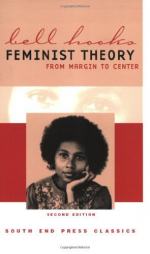
|
| Name: _________________________ | Period: ___________________ |
This test consists of 15 multiple choice questions and 5 short answer questions.
Multiple Choice Questions
1. In Chapter 1, the author states that feminist theory and the feminist movement were originally shaped by which type of people?
(a) Middle-class women.
(b) Expatriates living abroad.
(c) Working-class women.
(d) Middle-class white women.
2. According to the author, how are joint analyses of race, class, and gender seen today?
(a) They are exclusively embraced in university settings.
(b) They are still rejected by mainstream feminists as too radical.
(c) They are mostly practiced by black intellectuals.
(d) They are accepted by mainstream feminism as common practice.
3. From which position (or perspective) does the author claim to write in her analysis of feminism and its social manifestations?
(a) From the margins.
(b) From a foreign perspective.
(c) From a religious perspective.
(d) From an elite position.
4. What name did early feminists use to describe radical, or revolutionary, feminists?
(a) Naive.
(b) Sisters.
(c) Spoilers.
(d) Traitors.
5. When and where did the author enroll in her first women's studies class?
(a) At Howard in the 1970s.
(b) At Brown in the early 1980s.
(c) At UCLA in the late 1960s.
(d) At Stanford in the 1970s.
6. How does the author propose to prioritize the struggles against various forms of prejudice?
(a) People should prioritize whatever prejudice is most relevant to their lives.
(b) Feminists should focus on gender issues first and then address problems like classism.
(c) She does not think that prejudices can be prioritized one over the other.
(d) Feminists should look to their community leaders for guidance on how to prioritize their actions against different forms of prejudice.
7. What general statement does the author make about men that may seem to contradict her other claims?
(a) All men support and perpetuate sexism and sexist oppression in one form or another.
(b) Most men are unable to truly support feminism.
(c) Men are no longer sexist.
(d) Sexism is not perpetuated by educated men.
8. What are some of the biggest challenges to sisterhood?
(a) There used to be challenges but they have lessened.
(b) Unfair business practices.
(c) Global warming, politics, and religion.
(d) Racism, classism, sexism, and heterosexism.
9. Who must be retrained in order for the feminist movement to be successful?
(a) Men.
(b) Men and women.
(c) Teachers.
(d) White upper class men.
10. In the title of Chapter Five, what term is used to describe men's relationship to the feminist movement.
(a) Friends of the cause.
(b) Comrades in struggle.
(c) The oppressor.
(d) Enemy number one.
11. According to the author, how did early feminists see gender?
(a) As less important than race.
(b) As the sole determinant of a woman's fate.
(c) As a form of empowerment.
(d) As less important than class.
12. In the Preface, which four factors are most central to the author's argument about a person's position in society?
(a) Height, gender, income, and place of birth.
(b) Race, gender, income, and education.
(c) Education, political beliefs, place of birth, and family name.
(d) Race, weight, gender, and marital status.
13. According to the author, how has the relationship between feminism and the family often been portrayed?
(a) Feminism is often perceived as pro-family.
(b) Feminism has often been portrayed as anti-family and pro-freedom.
(c) The family is accepted as a necessary evil.
(d) Feminism does not seem to address this issue very clearly.
14. In the author's view, is it valid to define feminism in terms of creating a sense of community?
(a) She claims that non-white, lower class women, who already have a strong sense of community may not find this definition adequate.
(b) Community is something that all women lack so it is way to define feminism.
(c) Yes, this should be part of the universal definition of feminism.
(d) The definition is too vague to be useful.
15. In the Preface (2000), what examples does the author give of the problematic status of women in contemporary society?
(a) Low job benefits, high poverty, high divorce rates.
(b) High poverty, high divorce rates, lack of state assistance.
(c) High poverty, low status of single mothers, lack of state assistance and health care.
(d) High divorce rates, low job benefits, no enough day care.
Short Answer Questions
1. According to the author, what does society often teach women about what it means to be a woman?
2. What is the main relationship discussed in Chapter 5?
3. In the Preface to the second edition (2000), how does the author describe the original reception of her book?
4. In the Preface to the first edition (1984), which two key terms in her analysis does the author introduce?
5. At the end of the Preface to the second edition, where does the author maintain that a feminist path will lead us?
|
This section contains 862 words (approx. 3 pages at 300 words per page) |

|




